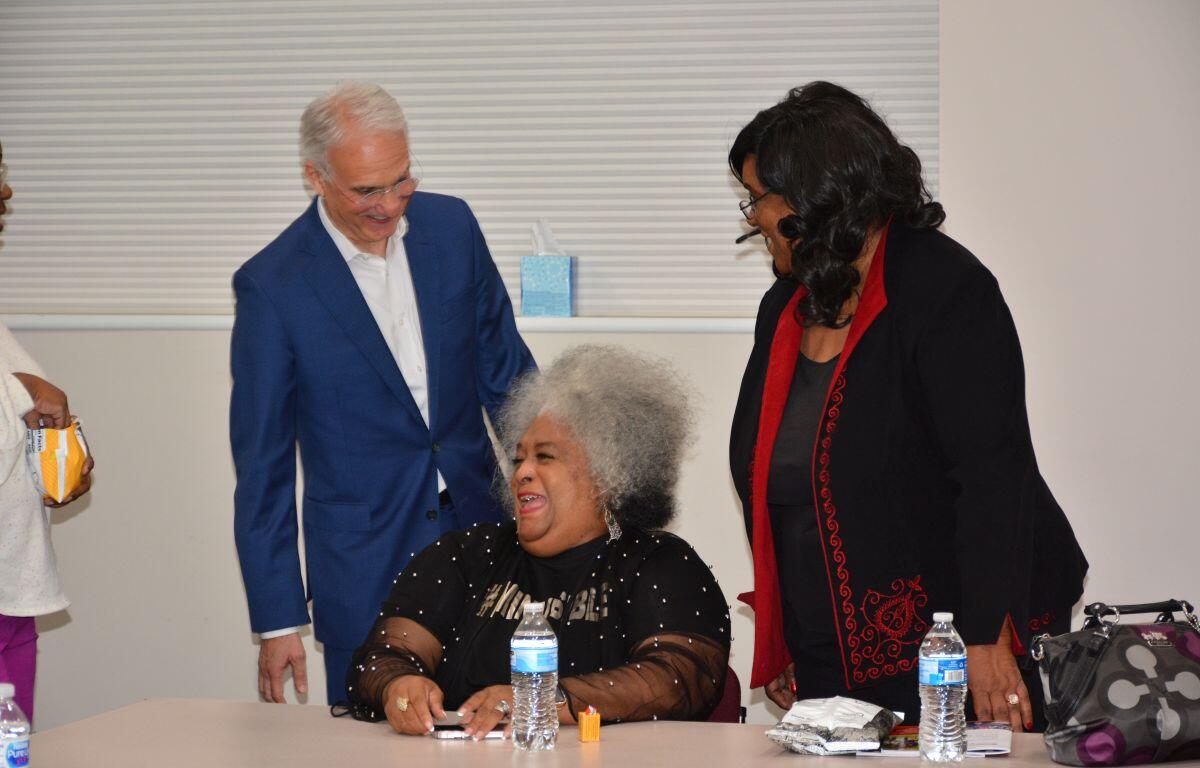CLARKSVILLE, TN (CLARKSVILLE NOW) – A new, community-led report released this week identifies challenges faced by Clarksville-Montgomery County Schools, and it lays out a seven-point agenda on how to tackle them as the area continues to grow.
The report, “Clarksville-MoCo Stepping Into the Future: A New Agenda for Education and the Community,” was led by the Harwood Institute for Public Innovation and introduced to the public at an event Monday evening.
The purpose of the report was to create “a seven-point education agenda to bring about a more equitable, inclusive and hopeful path forward for all of Clarksville-MoCo’s young people and families,” according a news release from the Harwood Institute.
The findings
In collaboration with Leadership Clarksville, Big Brothers Big Sisters of Clarksville and Women Veterans of America, the Harwood Institute engaged in a nine-month study, conducting roundtable conversations with residents and leaders about what is needed to take Clarksville-Montgomery County into the future.
Most of the Harwood report is centered on the gaps and challenges facing local public education. The report said it’s not meant to be an indictment of the school system, but rather a snapshot of how the community can get involved to help bridge the gaps.
“Education needs to be seen not as the sole responsibility of the local public schools, but as the responsibility of the entire community,” Rich Harwood, president and founder of The Harwood Institute, said in the release.
Several challenges to public education were listed, including a lack of parental involvement. The School Board’s public participation policy has been an ongoing issue for several years, with many parents saying there were too many barriers to overcome just to talk to their elected officials.
Last summer, a group of parents took the issue directly to the board, resulting a revision of the policy to allow more flexibility on topics they can address and more time to talk.
In total, the report listed seven areas in education and in the community that need improvement:
- Engaging parents and students.
- More things for young people to do after school other than sports.
- Strengthen mental health and mentorship support.
- Expand pre-K offerings.
- Give teachers greater support.
- Hire more teachers who look like the community.
- Ensure equitable resource allocation across all schools and areas.
Clarksville’s design
Support structures around education, such as local infrastructure, were also evaluated.
Several residents complained of a lack of planning in housing and business development, particularly noting the Wilma Rudolph Boulevard corridor as an example of unmitigated, sprawling growth.
A lack of public transportation and walkable infrastructure was noted as a major challenge.
“You really need to have a car to thrive,” said a resident in the report. Walking is not a viable option because main roads do not have sidewalks. Another said, “We want to have walkable spaces; we want to be able to walk to work, walk to school.”
Many comments noted how city’s design contributes to a disparity in resources, including food insecurity.
“Different areas of the city get different attention based on who lives there,” one resident said.
Another said there were privileges associated with certain neighborhoods and what side of town you live on, predominately noting that the New Providence area has seen little development over the last several years in comparison to the rest of the city.
Suggestions for tackling change
The report makes several recommendations for the city and its leaders.
Diversifying leadership was recommended, including diversity in who holds the power.
“These leaders tend to be connected and well-networked but often seen as ‘not accessible’ as one organizational leader put it, in an ‘ivory tower,’ or as not having ‘boots on the ground in the community,'” the report said.
Another suggestion was to hire more educators who look like the community. According to demographics provided by Anthony Johnson, CMCSS chief communications officer, there is a discrepancy in the racial makeup of teachers compared to students.
For the 2022-23 school year, 84% of teachers in Clarksville-Montgomery County were white, while only 48% of students were.
Other points were to invite more voices into local decision making, to create more opportunities for leadership, and to create spaces and forums where this can happen publicly.
Johnson said the district was already aware of many of these issues and already has plans in place to address them.
“I think you’ll see some of the challenges in that report reflected in the district’s strategic work for next school year, so pieces around family engagement and pieces around communication, that’s a part of our work and opportunities where we can refine,” Johnson said.


















